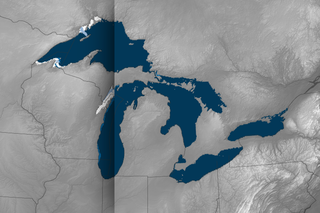The U.S. Department of Energy (DOE) has awarded NOAA $5 million to support the conversion of the Mauna Loa atmospheric baseline observatory in Hawaii to a net-zero carbon facility. Solar panels and battery storage systems will enable the observatory to operate on renewable energy.
Larger than Vermont, an underwater seascape of cold-water coral mounds offshore the southeast United States coast has been deemed the largest deep-sea coral reef habitat discovered to date, according to a paper recently published in the scientific journal Geomatics.
A groundbreaking new study spanning more than a decade and hundreds of miles of the Florida Coral Reef demonstrates the key role benthic communities play in reducing the impacts of climate change on coral reef ecosystems, specifically ocean acidification.
The hydroxyl radical (OH) molecule has a short lifespan but a long impact. It reacts with with harmful gases and helps clean Earth’s atmosphere. A new study examines OH changes in a warming climate.
Days with the most prominent Saharan dust correlated with fewer thunderstorms in the Atlantic and less rainfall across Puerto Rico, a pattern that has become more frequent over the past 40 years.
At ground level, the mobile lab can often measure emissions closer to the fire source, and it can be used at night when flying an aircraft near a wildfire may be hazardous. Lab results show that wildfire emissions vary based on whether the fire is flaming or smoldering.
Two new projects will provide useful observations to enhance monitoring and modeling of precipitation events. Each one will expand existing analysis data.
The wind-driven Marshall Fire erupted into the most costly wildfire in Colorado history on December 30, 2021, evolving in one hour from a grass fire into a suburban firestorm that destroyed 1,084 homes and seven commercial properties.
The Madden–Julian Oscillation (MJO) influences atmospheric circulation and deep convection over the tropical Indian Ocean and Pacific Ocean on a 30–90 day cycle. A new study finds that global warming over the past century has made the MJO more predictable.
